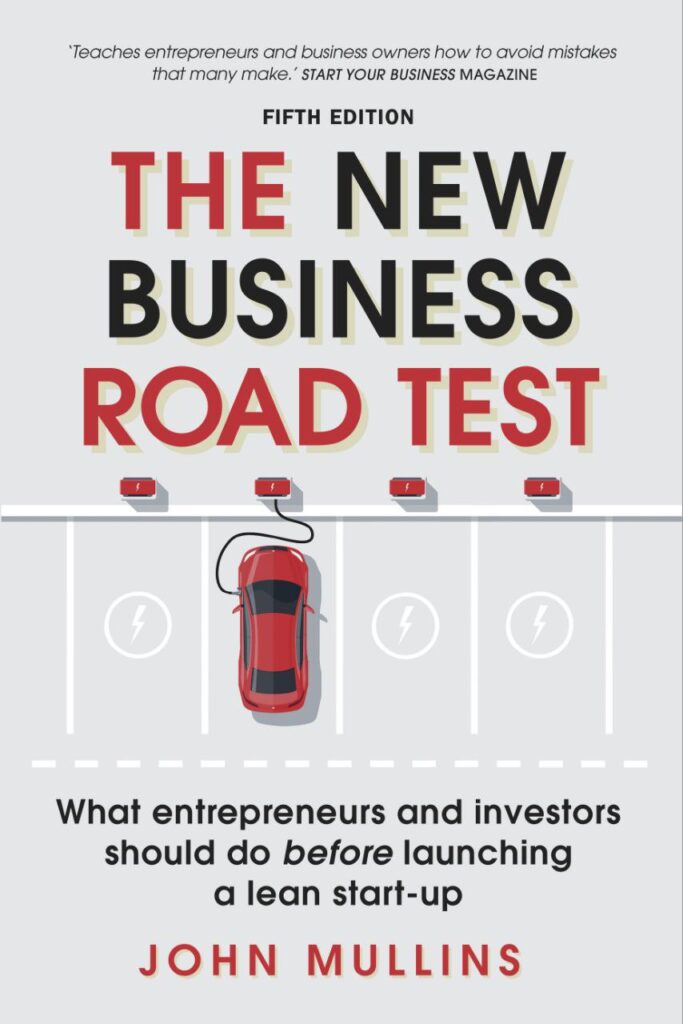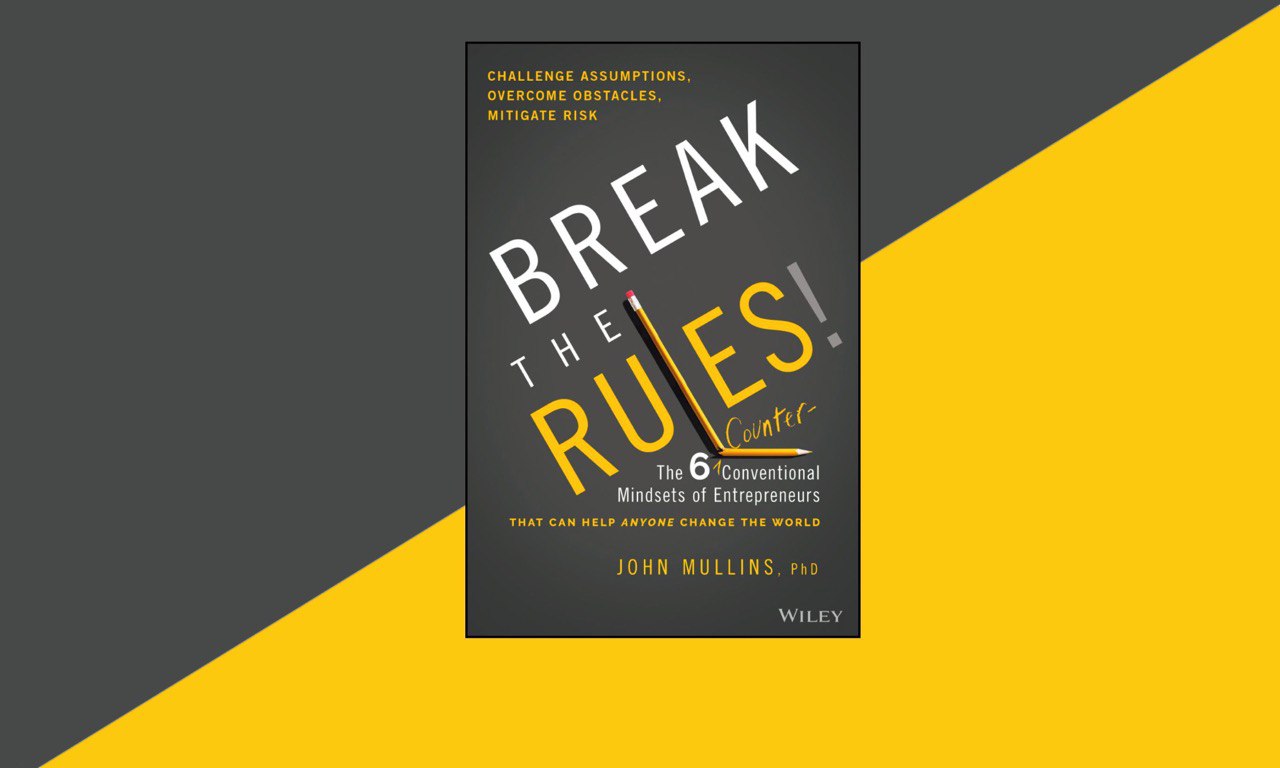If you’re an instructor teaching students about entrepreneurship, one of your key objectives may be to equip them with an entrepreneurial mindset. If you’re doing that in the introductory course, so much the better, because Break the Rules! will give them six tangible and actionable mindsets that they can examine in case studies and/or practice in a real-world exercises or a project that you assign to them. And, even better, the six mindsets are there to take with them as they explore the rest of your entrepreneurship curriculum.
At the end of each of Chapters 2 through 7, they’ll get several pages of key lessons that can be taken away from that chapter’s case studies, so they can see how the six mindsets have been applied by some of today’s most inspiring entrepreneurs – and equally importantly, by others who have stumbled or failed. They’ll also get a few pages of advice in each chapter about practical steps they can take now to make each of the mindsets their own.
As Steve Blank, the godfather of the lean startup movement, reminds us, most of what needs to be learned about the prospects for any new venture is likely found “out of the building” and outside your and John’s classrooms The same thing is true for what needs to be learned about entrepreneurship, and about being or becoming an entrepreneur, more generally. Thus, John’s advice to you is to get your students “out of the building,” whether that means working on a class project, empirically assessing an entrepreneurial opportunity they have in mind, or interviewing local entrepreneurs about how they put one or more of the six mindsets to work.
Here, then, are some teaching materials, most of them available from The Case Centre (or from John if you ask him!) that will help your students learn how they, too, might become “entrepreneurial”. And some suggested exercises and an offer, too!
Case studies from around the world (most with Teaching Notes by John)
Chapter 1: (Introduction)
Cases
– Lynda Weinman
– Nobel (A), (B), and (C)
– Patrick McGinnis
Exercise Chapter 1 (in-class and post-class):
– Ask students to read the Lynda Weinman caselet and Break the Rules! Chapter 1. Discuss.
– Ask students to interview an entrepreneur prior to the next class and ask which of the mindsets
apply to them, with examples.
– Next class, discuss students’ findings and compare and contrast them. Which mindsets were used most? Which led to positive results? Which did not?
Chapter 2 (“Yes, we can!”)
Exercise Chapter 2 (in-class):
– Ask students to read Break the Rules! Chapter 2.
– Compare and contrast the stories of SubWay Link and MOVEGuides.
– Ask students to identify the main factors that they believe differentiate between SubWay Link’s success and MOVEGuides’ failures.
Chapter 3: (“Problem-first, not product-first logic)
Cases
– Apex Ski Boots
– BeautyBooked
– CREE (A), (B), and (C)
– Silverglide Surgical Technologies (A) and (B)
– Simon Cohen (A), (B), and (C)
Exercise Chapter 3 (pre-class and in-class):
– Ask students to read Break the Rules! Chapter 3 and view this classic video clip by famed venture capital investor Vinod Khosla: https://ecorner.stanford.edu/videos/any-big-problem-is-a-big-
opportunity/.
– Ask students to interview three entrepreneurs and ask them what problem they solve for their customers, if any, and the importance (to the customer) thereof.
– Discuss: What are the circumstances (i.e., in what kinds of businesses and for what kinds of customers) in which problem-first logic is best? When is it not necessary?
Chapter 4: (Think narrow, not broad)
Cases
– Big Beautiful Hair
– Dental Post
– Mondher M’Henni
– Visual Optical (A) and (B)
Exercise Chapter 4 (pre-class and in-class):
– “Think narrow, not broad” is the most counter-intuitive of the six mindsets, as nearly every business plan argues that the market being targeted is “huge”!
– Ask students to read Break the Rules! Chapter 4
– Ask them to carry a small notepad (or use their phone) for a few days to make note of everything they encounter that “bugs” them. The result is a “bug list”.
– In class, discuss:
o Their best “bug list” findings
o What narrow target markets are likely to appreciate solutions to them
o Brainstorm potential solutions that might lead to business opportunities.
Chapter 5: (Ask for the cash, ride the float)
Cases
– Budgetplaces.com (A), (B), and (C)
– En Grande
– Funovation
– NakedWines
– The Loot (A), (B), and (C)
Exercise Chapter 5 (pre-class and in-class):
– Ask students to read to read Break the Rules! Chapter 5 and the following interview of growth
equity investor Hillel Zidel: https://espressocapital.com/resources/blog/kennet-hillel-zidel/.
– Ask students to ask Chat GPT how Dell Computer’s early years were funded.
– Discuss:
o Under what circumstances is asking customers for cash up front likely to be successful?
o When won’t it work?
Chapter 6: (Beg, borrow, but don’t steal):
Cases
Exercise Chapter 6 (pre-class and in-class):
– Ask students to read to read the Big Beautiful Hair caselet (or the Go Ape (A) and (B) cases) and Break the Rules! Chapter 6
– Ask them to interview three online or services opportunities that could start out with mostly “borrowed” assets.
– Explore how to gather evidence to support the feasibility thereof (or not!).
Chapter 7: (Instead of asking permission, beg forgiveness later)
Exercise Chapter 7 (pre-class and in-class):
– Ask students to read to read Break the Rules! Chapter 7
– Ask students to ask Chat GPT which major cities (after San Francisco) Uber entered without asking for permission and which it asked for permission up front?
– Discuss: In Uber’s case, which approach tended to work better? When? Why?
Chapter 8: (Conclusion)
Cases
– Lynda Weinman
– Nobel (A), (B), and (C)
– Patrick McGinnis
Exercise Chapter 8 (in-class):
– Survey the class. For those intending to become entrepreneurs, which three of the six mindsets will they keep top of mind? For those not intending to become entrepreneurs, which of the six mindsets might they find fruitful?
– Discuss the differences, and why
An offer from John
Break the Rules! is not a textbook, of course. But if you decide to make it required reading in your undergraduate or graduate course, John is often happy to make a guest appearance for you, whether in-person or via Zoom, his schedule permitting. Don’t be afraid to ask!

For your Opportunity Assessment course.
- Assign student teams a project to empirically assess the attractiveness of an opportunity they have in mind.
- Assign John’s book, The New Business Road Test, as their guide
- Get them “out of the building” to gather primary and secondary research as evidence of feasibility – or not
- Grade the quality of the work, not the attractiveness of the idea
- Give two awards: one for the best work on a project judged as feasible; another for the best work on a project judged as not feasible.
For your Business Planning or Entrepreneurial Finance course
Assign for one class session Chapter 1 of John’s book, The Customer-Funded Business, along with a related case study, to teach them how to bootstrap and fund their business – without VC.
Cases
- Budgetplaces.com (A), (B), and (C)
- En Grande
- Nobel (A), (B), and (C)

